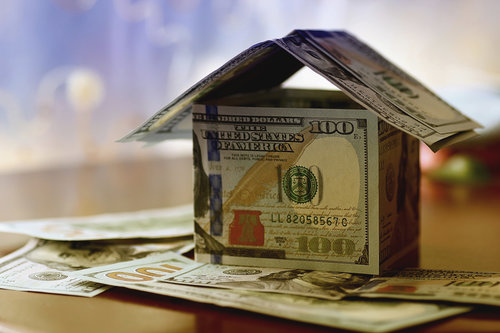As we prepare for a new administration, many wonder what lies in store for Fannie Mae and Freddie Mac.
President-elect Donald Trump’s nominee for Secretary of Treasury, Steven Mnuchin – a former Goldman Sachs partner and hedge fund investor – was quoted on the Fox Business Network in November saying he would like to “get Fannie [Mae] and Freddie [Mac] out of government ownership” and ultimately privatize the government-sponsored enterprises (GSEs), which act as guarantors for home mortgages. But what exactly would that proposal entail?
The Current Mortgage Landscape
Both Fannie Mae and Freddie Mac play a central role in today’s mortgage industry, says Benjamin Keys, an assistant professor of real estate at the Wharton School of the University of Pennsylvania. Fannie and Freddie, Keys explains, guarantee “the vast majority” of originated loans, and the bubble-era, non-GSE market is almost non-existent today.
“At the moment, we have many banks and non-banks that are originating loans, and those loans are then sold and guaranteed through Fannie Mae and Freddie Mac and securitized, so [they are] converted into bonds to investors,” says Keys.
In 2016, most Chicagoland loans less than $424,100 were sold and guaranteed through Fannie and Freddie, but loans above that threshold remain on bank balance sheets. The effect, Keys says, is that of a “split market.”
“You sort of have a split market where you have what you would think of as jumbo loans, which are being held by the banks on their balance sheets, and then you have small- and medium-sized loans, which are being securitized through Fannie Mae and Freddie Mac,” he says.
The 30-Year Fixed Rate Mortgage
Perhaps one of the most popular mortgage products maintained by Fannie and Freddie is the 30-year fixed rate mortgage, with rates averaging 4.20 percent at the time of press.
The long-term mortgage product traces its roots to the Great Depression, when mortgages were shorter term and, along with requiring a large down payment, had to be refinanced after five years, leaving homeowners with considerable uncertainty.
“In the midst of the Great Depression,” Keys explains, “people were unable to make their payments, they found it difficult to refinance and find credit, and we had a massive collapse of housing [and] huge waves of foreclosures. So, really, [the 30-year fixed rate mortgage] was in response to the Great Depression and the recognition that longer fixed-rate mortgage contracts would provide much more stability for borrowers.”
Looking Ahead
Keys believes that interest rates will be volatile over the next 30 years. With this in mind, he stresses that one of the big advantages of a 30-year fixed rate mortgage is the stability it allows for borrowers to have “an extremely predictable path of payments.”
“I think the challenge is how do you provide that when the private market generally would not want to do that on its own?” he says.
Keys is uncertain what a privatized version of Fannie Mae and Freddie Mac would look like.
“There are many open questions about what firms would look like in a private form, and what differences we would see in terms of pricing and their affordability mandates,” he says. “Fannie and Freddie also do quite a bit to support affordable housing and access to credit, and they would not have those obligations if they were fully private.”
The real question, Keys says, is what happens to the market during bad times: would a private version of Fannie and Freddie provide liquidity to the mortgage market in the same fashion that they did during the downturn, when it lost huge amounts of money as a public entity?
What Should Consumers Look For?
Whether Fannie and Freddie will be privatized remains to be seen.
In the meantime, Keys believes that mortgage interest rates will continue to rise, as they have since the election. He also foresees higher costs for consumers with adjustable rate mortgages, as well as a decline in refinancing volume.
“Because there will be this decrease in volume, you may see more pressure from the private market to actually try to generate more loan volume,” Keys says, “so you might see different mortgage products become popular again.”
“This is just one piece of the macro economy,” he continues. “If the rest of the economy booms, then we might see interest rates and home prices both rise at the same time. But if the economy goes into a downturn, then there’s a great deal of uncertainty about the liquidity of the mortgage market, in the case where Fannie and Freddie have both been privatized.”
If Fannie and Freddie are privatized, Keys says, two things will need to happen: a “really clear and explicit backstop” must be established, as well as some kind of government guarantee “in the background” that is accurately priced.
“So, thinking about ways to make that pricing explicit – even as some functions of Fannie Mae and Freddie Mac are privatized – is a key challenge for this administration.”
